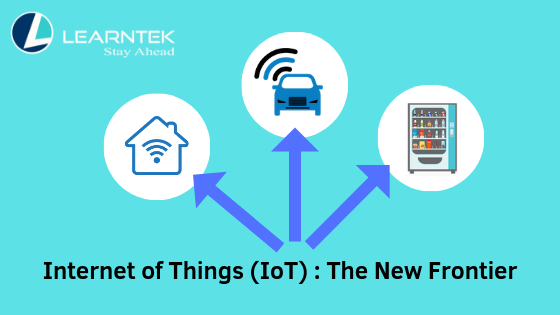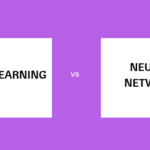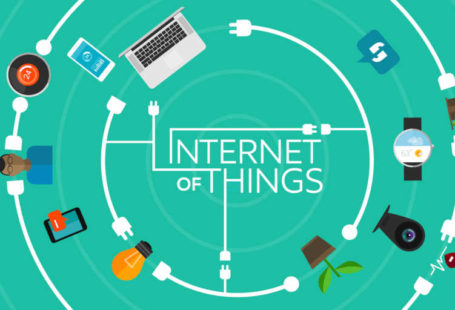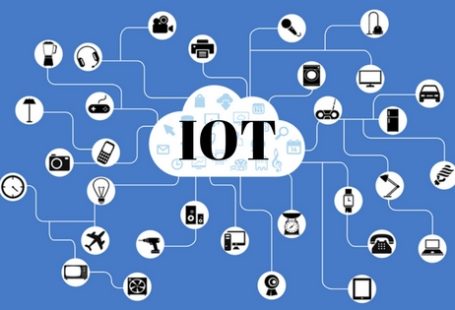Internet of Things (IoT): The New Frontier
The rising influence of the internet has made connectivity ubiquitous and available to all businesses and people. The internet, with its network of large servers and individual computers and whole network of connecting devices like routers, modems, sensors, adapters, cables etc. together with the appropriate software, forms one huge network whose tremendous computing power enables various processes to be faster, efficient and cost effective.
Sometime back, the only devices that could connect to this network were computers & related computing and networking devices. The idea of Internet of Things (IoT) dramatically changes this definition and gives it a very innovative and grander perspective. This article will explain the basics of IoT with few practical examples and will also explain how it is re-shaping our daily life.
As a concept, IoT means that any electronic or mechanical device or instrument can be connected to the internet. This can include home appliances, vehicles, gadgets, medical implants, apparel, machinery and many other things. All these can either have a basic internal or external sensor or they themselves can be full scale digital devices with their own protocol and connector devices. The central idea of IoT is that any object on the face of the earth can virtually be connected via the internet and the system can then be used to gather information from the object remotely and can also be used to control and alter its behavior.
IoT has applications in industrial and domestic fronts. The following are 3 major segments where IoT is currently being deployed:
- Smart Homes: Domestic devices like washing machines, refrigerators, air conditioners, alarms, doors, ovens and many others can be interconnected via smart chips and connected to the internet. This means that each of these devices can be turned on/off and controlled via the internet. With this technology, we can envisage the following unique scenarios:
- When the owner of the house is leaving from office, he or she can turn on the air conditioner and set it to a pre-set temperature so that they can arrive to a readily comfort-cooled home.
- The safety alarm in the house can be connected to the internet – if there is a forced break-in or an alarm system failure, the owner of the house can be instantly notified, and burglaries can be prevented or thwarted. Any young children or old people in the house can thus be safeguarded.
- The doors of a house can be remotely controlled so that any young children in the house do not accidently lock themselves inside.
- Smart televisions can be pre-programmed remotely so that either the parental locks can be monitored or any favorite tv shows can be downloaded or switched on so that they are ready to watch when the owners get home.
- Smart Ovens can be put on pre-heat mode, just ready to start cooking when the people got home.
- Smart music players can also connect to the central application and the owner can use it to turn on music of his or her choice, so that they can come home to soothing music of their choice at the end of a long day!
- Smart Vehicles:
Vehicles can also be connected through the internet. “Smart Fleets”, as these are coming to be called, are a group of vehicles that can be remotely monitored and tracked. This fleet has smart chips installed on them which can connect over the internet and relay the following information:
- Exact location co-ordinates of the vehicles
- Speed/Acceleration of the vehicles
- Nature of cargo carried
- Digital record of all statutory compliances
- Cost and security through the course of the journey (toll booths, security checks, speed checks etc)
- Health and safety of crew
One of the major transport companies, DHL has launched a service called “Smartrucking”, which is a network of internet connected vehicles and hardware/software systems which together enable faster, cheaper and efficient logistics services to the end customer.
Smart cars and driverless cars are another technology evolving around the concept of IoT. The development of driverless cars has been largely helped by the development of IoT, as this ensures that the cars are monitored and remotely controlled at any given time. So till the time the technology is made perfect, IoT would ensure that the prototype cars are safe on the roads and do not cause any untoward incidents.
Not just vehicles like trucks and cars but also ships, bikes, motorcycles, drones and any other motorized devices can be managed using IoT to deliver superior performance and most importantly, ensure safety to human lives.
- Smart Machines:
Industrial IoT (IIoT) is a big technology field that has been around for quite some time now and has brought about tremendous changes in the traditional manufacturing segment. Industrial IoT is part of the so called third industrial revolution which is powered by smart devices, technologies like 3D printing, connection protocols and a widespread acceptance of these trends.
Large IT majors like Accenture, IBM, Microsoft etc. have all entered into this race for Industrial IoT and they are all developing protocols which would soon become the standard for this industry. There are IoT focused protocols like 6LoWPAN, CoAP and others which are still being developed and made perfect. There are also many more open platform operating systems that are available which can be integrated over IoT.
IoT is thus becoming an all compassing, comprehensive system that is rapidly developing the entire ecosystem of software, hardware, firmware, protocols, operating systems and devices.
Now that we have understood IoT, how to make it work for us? Imagine millions of inter-connected devices churning out zillions of terabytes of data – how do we make sense of this huge information? The data coming from this plethora of devices need to be collected and analyzed in real-time. Not just that, this data also needs to be stored and retrieved (along with managing latencies) as required and hence will need advanced database management systems. The data coming into IoT systems is not just traditional numbers and static data but can also be video, audio, photographs, GPS co-ordinates etc. which needs to be handled suitably. With improvements in cloud computing, this data can now all be processed efficiently.
We can take an example from the manufacturing setup to explain this. Take for example a petroleum refining plant which has a series of furnaces, distilleries, boilers, reactors, burners etc. When all these are in an IoT system, there would be continuous data that is coming in regarding physical parameters like temperature, pressure, partial pressure, boiling point, flashpoints etc. and chemical parameters like viscosity, percentage of certain gases and chemicals in the mixtures etc.
All these data will be simultaneously captured and fed into the IoT system which can then be used to monitor the status of each machine, remotely change the settings in these machines and prevent accidents and other mishaps on the shop floor. There would be billions of data points on these parameters that are generated every second and will need sophisticated algorithms to read and process the coherent picture. This is where Big Data Analytics comes in to play and with increasing advancement in this field, this is becoming manageable.
IoT is a very interesting field that is rapidly growing and opening many fascinating avenues that will soon change many aspects of daily lives for people and businesses.





